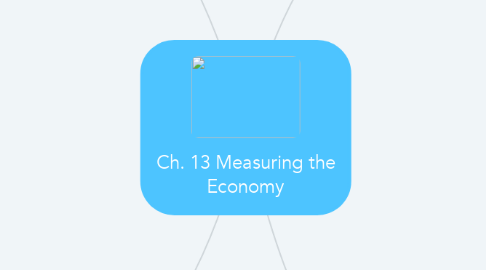Ch. 13 Measuring the Economy
作者:Tanner Potulny

1. 13.4 - What Does the Inflation Rate Reveal About an Economy’s Health?
1.1. Inflation Rate - The percentage increase in the average price level of goods and services from one month or year to the next
1.2. Economists at the BLS track changes in the cost of living using what is known as the consumer price index. A price index measures the average change in price of a type of good over time.
1.3. Consumer Price Index - (CPI)a measure of price changes in consumer goods and services over time; the CPI shows changes in the cost of living from year to year.
1.4. Because the CPI measures the price changes of a fixed list of goods, it does not take into account consumers' ability to substitute goods in response to price changes.
1.5. The BLS cannot predict which new products will succeed, so the new products are not incorporated into the market basket until they have become commonplace.
1.6. The BLS relies on the consumer price index to estimate the level of inflation in the United States each month. However, critics point to several biases that may distort the CPI, making the reported inflation rate less than accurate.
2. 13.5 - How Does the Business Cycle Relate to Economic Health?
2.1. The business cycle consists of four phases; expansion, peak, contraction, and troughs.
2.2. Business cycles are irregular in both length and severity. This makes peaks and troughs difficult to predict. Nonetheless, economists attempt to do just that, using a variety of economic indicators.
2.3. Leading Economic Indicators - Measures that consistently rise or fall several months before an expansion or a contraction begins.
2.4. Business cycles are popularly known as periods of boom and bust. A boom is the expansion phase of the cycle. It may also be known as a recovery, upturn, upswing, or period of prosperity. All these terms mean the same thing—the economy is healthy and growing.
2.5. Recession: a period of declining national economic activity, usually measured as a decrease in GDP for at least two consecutive quarters or 6 months.
2.6. Depression: - A prolonged economic downturn characterized by plunging real GDP and extremely high unemployment.
2.7. Recoveries are usually triggered by a combination of events. As business inventories shrink over time, firms begin to increase production. Hiring begins to pick up. Optimism returns and consumers start spending again. A new expansion begins.
2.8. Business Cycle - A recurring pattern of growth and decline in economic activity over time
3. 13.2 - How Do Economists Measure the Size of an Economy?
3.1. The main measure of the size of a nation's economy is its gross domestic product. GDP is an economic indicator that measures a country's total economic output.
3.2. Each sector's spending makes up one of the four components of GDP: household consumption (C), business investment (I), government purchases (G), and the net of exports minus imports (NX)
3.3. To compensate for the effects of inflation, the Commerce Department calculates what is called real GDP. Real GDP measures the output of an economy not in current dollars, but in constant dollars.
3.4. Market Value- the price buyers are willing to pay for a good or service in a competitive market.
3.5. As a country's per capita GDP increases, Health, literacy, and standard of living also increase.
3.6. Net Exports - the value of all exports minus all imports.
4. 13.3 - What Does the Unemployment Rate Tell Us About an Economy’s Health?
4.1. The BLS gathers detailed information about people who are unemployed. Based on those data and further research, economists identify four types of unemployment: frictional, structural, seasonal, and cyclical.
4.2. Frictional Unemployment - a type of unemployment that results when workers are seeking their first job or have left one job and are seeking another.
4.3. Seasonal Unemployment - a type of unemployment that results when businesses shut down or slow down for part of the year, often because of weather.
4.4. Every economy goes through prosperous times and hard times. Such cycles of growth and decline are the cause of cyclical unemployment. This type of unemployment occurs during periods of decline.
4.5. There will always be some frictional, seasonal, and structural unemployment. Some people will always be out of work, even in an economy with full employment.
4.6. In determining how many of the country's more than 315 million people are unemployed, the BLS makes every effort to be accurate. Still, critics point to several problems that may make the results less than exact.
4.7. Underground Economy: a sector of the economy based on illegal activities, such as drug dealing and unlawful gambling.


